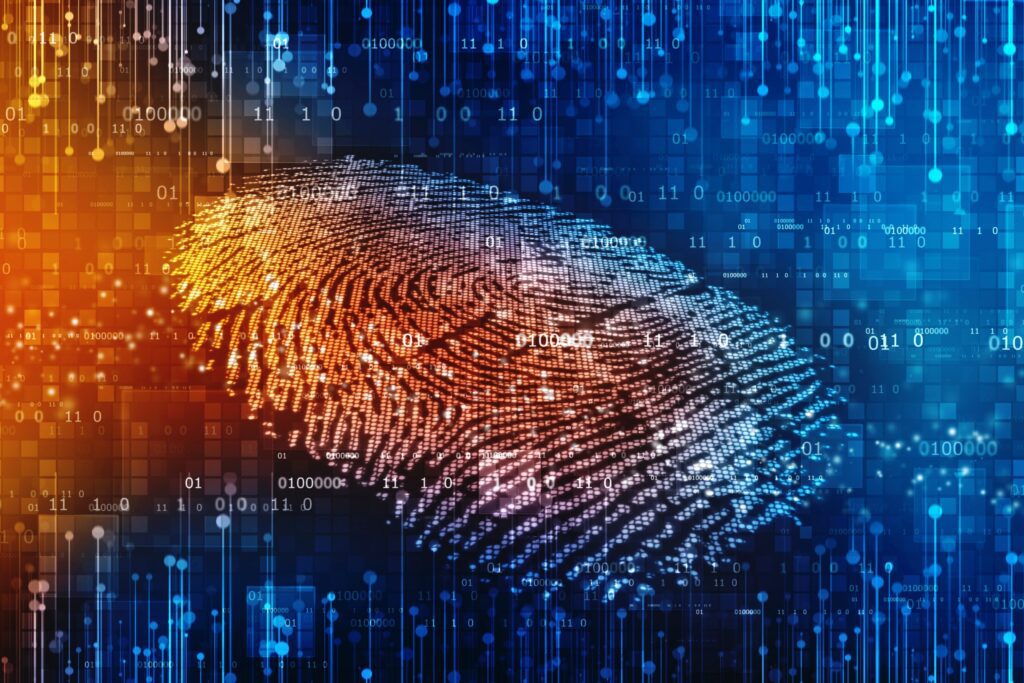Introduction
In an increasingly digital world, biometric authentication—using fingerprints, facial recognition, voice patterns, and iris scans—has revolutionized identity verification. While it offers unparalleled security and convenience, biometric data breaches present alarming risks. Unlike passwords, biometric data can’t be reset once compromised, posing lifelong threats to individuals’ privacy and security.
This article explores the vulnerabilities of biometric systems, real-world breach incidents, privacy concerns, and strategies for mitigating risks in an era dominated by AI and surveillance technologies.
What Is Biometric Data?
Biometric data includes unique physiological and behavioral traits used for authentication and identification. Common types include:
- Fingerprints: Digital mapping of ridge patterns.
- Facial Recognition: Analyzing facial geometry, such as the distance between eyes, nose, and mouth.
- Voice Recognition: Creating unique voiceprints based on tone and rhythm.
- Iris Scans: Capturing intricate eye patterns.
- Behavioral Biometrics: Tracking keystroke dynamics, gait, or device handling patterns.
Biometric data is typically encrypted and stored locally on devices or in centralized databases. However, this storage method introduces critical vulnerabilities, especially when cybersecurity measures are inadequate.
Privacy Concerns with Biometric Data Collection
- Irreversibility of Data
Unlike passwords, biometric data cannot be changed if compromised. This permanence makes breaches particularly dangerous, leaving individuals vulnerable to identity theft and fraud for life. - Data Breaches and Theft
Hackers target biometric databases to gain unauthorized access to sensitive information. Stolen data can be exploited for criminal activities, including financial fraud and unauthorized surveillance. - Lack of Transparency
Many organizations fail to disclose how biometric data is stored, shared, or protected, leading to public mistrust and increased security risks. - Mass Surveillance Risks
Biometric systems, especially facial recognition, enable covert tracking without individuals’ consent. This raises ethical concerns around surveillance, civil liberties, and data misuse. - Function Creep
Biometric data collected for one purpose may be repurposed without user consent, violating privacy principles. For example, data used for workplace access could be exploited for employee monitoring.
Notable Biometric Data Breaches
- US Office of Personnel Management (OPM) Breach (2015)
Compromised data of 21.5 million individuals, including 5.6 million fingerprints. The breach exposed national security vulnerabilities due to poor encryption practices. - Biostar 2 Breach (2019)
Exposed 27.8 million biometric records from Suprema’s access control system, including fingerprints, facial recognition data, and unencrypted personal information. - Meta’s Biometric Settlement (2021 & 2024)
Meta paid $650 million and later $1.4 billion for violating biometric privacy laws by collecting facial recognition data without explicit user consent. - Pan-American Life Insurance Group (PALIG) Breach (2023)
Hackers exploited MOVEit file transfer vulnerabilities, compromising biometric identifiers and personal health data, highlighting the risks of third-party data handling. - Outabox Facial Recognition Breach (2024)
An Australian firm suffered a breach exposing over 1 million biometric records, including facial recognition data, signatures, and driver’s licenses. This incident emphasized the need for strict data protection laws and robust internal controls.
How to Protect Biometric Data
- Encryption of Biometric Data
Encrypt data both in transit and at rest to prevent unauthorized access during breaches. - Decentralized Storage
Avoid centralized databases that create single points of failure. Use on-device storage for biometric templates. - Regular Security Audits
Conduct routine audits to identify vulnerabilities and ensure compliance with data protection regulations. - Data Minimization
Collect only the biometric data necessary for specific functions. Avoid unnecessary long-term storage. - Transparent Privacy Policies
Clearly communicate data collection, usage, and retention policies to users. Obtain explicit, informed consent before gathering biometric information. - Use of Multi-Factor Authentication (MFA)
Combine biometrics with traditional security measures like passwords or hardware tokens to enhance protection. - Rapid Breach Response Plans
Develop incident response strategies to mitigate damage quickly if a breach occurs.
Ethical Considerations in Biometric Data Usage
- Informed Consent: Users must understand how their data is collected, stored, and used.
- Accountability: Organizations must be held accountable for data breaches and misuse.
- Right to Opt-Out: Individuals should have the option to decline biometric data collection without facing discrimination.
- Fairness and Non-Discrimination: Ensure biometric systems do not perpetuate biases, particularly in facial recognition technologies.
Regulatory Landscape for Biometric Data Protection
- GDPR (EU): Classifies biometric data as sensitive, imposing strict processing and consent requirements.
- Biometric Information Privacy Act (BIPA – USA): Requires informed consent before collecting biometric data.
- Privacy and Data Protection Act (PDP – Australia): Regulates biometric data handling in the public sector.
Conclusion
Biometric data breaches pose significant threats, from identity theft to mass surveillance. As technology advances, organizations must adopt stringent security measures, ethical practices, and transparent policies to protect sensitive data. Users, too, should stay informed about their privacy rights and the risks associated with biometric technologies.
The future of biometric security lies in balancing innovation with robust data protection to safeguard personal identities in the digital age.


